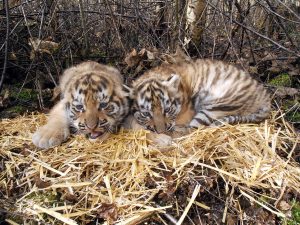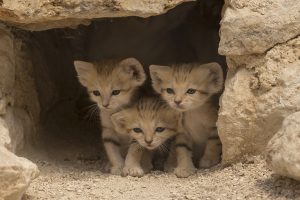Introduction
During too many years, zoological parks were simple living animal collections, in which the well-being, conservation or education notions were ignored if not unknown. In view of the threats that our species inflicts to our beautiful planet and its biodiversity and witnessing powerless the rarefaction and disappearance of numerous animal and plant species, some directors and scientists of zoological parks began, in the 70s, to consider the animals they owned like important individuals that must be protected and keep them through time in order to always see these species in zoos and reintroduce them in the naturel spaces of their ancestors in café if they went extinct.
This stimulus if it was long to come, created the foundations of what we call nowadays the ex-situ conservation, which means the conservation outside the natural space. Many zoological parks therefore united, started to collaborate and work together for one common goal: Ensure the survival and the conservation of threatened species in the framework of breeding programs.
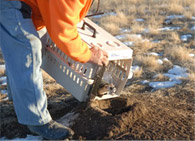

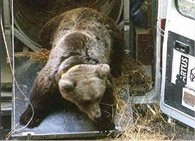
The International Union for Nature Conservation affirms the utility of zoological parks by saying:

-
- « … To preserve the biological diversity, protecting the biotope is not sufficient. Interventions such as the creation of autonomous captive populations are necessary to avoid the extinction of numerous species, in particular those who are at risk and whose biotope is considerably reduced, fragmented and disrupted. It’s important for Captivity Breeding Programs to be put in place before the population reach a critical threshold, and that these programs are therefore coordinated on the international plan, in accordance to rational biological principles, in view of the maintenance or reestablishment of viable populations in the wild… »
-
- « … More than 3000 species of vertebrates are raised in captivity, among other things in zoological parks. In suitable situations of captivity, the majority of these species reproduce themselves and viable populations can be maintained in the long-term. Those establishment offers a rich experience in the sectors of breeding, veterinarian medicine, reproduction biology, behavior and genetic. It could be really damaging to ignore them… »
Breeding programs

-
- In 1982, under the impulsion of the parks of Rotterdam, Amsterdam and Anvers, the European zoological parks created des Breeding programs in order to regulate et optimize the reproduction of species maintained in captivity.
- PROGRAM’S OBJECTIVES: Constitute viable populations of 250 to 500 individuals for each species by conserving, on 150 years, more than 90% of the genetic diversity des fundings individuals of the population.
-
In 1988, the EAZA (European Association of Zoo and Aquaria) is created. This association based in the Netherlands inside the Amsterdam’s Zoo (Artis Zoo) is since this period the organization which supervise the following of European Breeding Programs et approve the creation of new ones.
-
Until June 2018, the EAZA distinguished 3 levels of deepening for the management of captive populations :
- The European Breeding Programs (EEP)
 The EEP is the highest level put in place for the management of captive population of a species among the EAZA. Each EEP is managed by a coordinator. This coordinator is assisted by a committee whose representatives are elected by the establishment hosting the concerned species. The species threatened with extinction or the weekly represented species in zoological parks have their breeding program.
The EEP is the highest level put in place for the management of captive population of a species among the EAZA. Each EEP is managed by a coordinator. This coordinator is assisted by a committee whose representatives are elected by the establishment hosting the concerned species. The species threatened with extinction or the weekly represented species in zoological parks have their breeding program.
- The Europaen Studbooks (ESB)
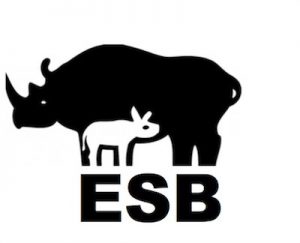 When a species is in ESB, it means that the management of its captive population is less intensive than the EEP. Species placed in ESB are less threatened in nature but are at risk to become it. ESB can become EEP if their state in-situ changes or if the coordinator thinks that the population management must be more rigid.
When a species is in ESB, it means that the management of its captive population is less intensive than the EEP. Species placed in ESB are less threatened in nature but are at risk to become it. ESB can become EEP if their state in-situ changes or if the coordinator thinks that the population management must be more rigid. - Monitoring
It’s the lowest level for the following of a species among the EAZA, animals placed in « monitoring » are little threatened in nature and their management in captivity isn’t a priority. There are also programs in other regions of the planet (North-American programs, Japanese programs, Australian programs, …) and there are also international studbooks (ISB) for certain species of felines such as tigers, snow panthers, cheetahs and caracals.
- The European Breeding Programs (EEP)
-
- Each species is therefore followed by a coordinator.
This person is generally a director, a veterinarian or a biologist of a zoo member of the EAZA. Being coordinator, it’s being a volunteer; it means that any person working in a park can offer his services to the EAZA to manage a breeding program which doesn’t exists. However, once the breeding program is created, in case of coordinator change, the new one can be selected after elections (mainly in the case of an important effective species).
- The first task of the coordinator is to create the studbook of the species he is in charge with.
The studbook of a species is a register which contains the list of all the individuals of this species who are still or have been hosted in captivity since the firsts known captives animals. It’s from this register that we can apprehend the complete genealogy of the captive population. This register mentions all the known founding animals (animals formerly captured in natural environment) and all the animals born in captivity to specify the kinship relations between individuals.The amount of work to create the first studbook of a species is considerable as it is necessary to contact the maximum of zoological parks (members or not of the EAZA) and ask them to provide as much details as possible [genre, birth date, birth place, parents’ information, means of identification (tattoos, microchip, …), name, …] on the individuals they currently have and they have hosted in the past. The coordinator must compile next the entirety of gathered information in the studbook module in the computer software zims/species360 which manages the studbooks.
After this first step, the work needed is less as it is sufficient for the coordinator to recontact, at the start of every year, the parks which still host this species et register all its movements during the previous year (births, deaths, transfers, etc.). There it only remains to edit the studbook in paper version and/or digital for these parks, for the specialists of this species and finally, for the EAZA.
- The second task of the coordinator consists in managing the species’ population for a long-term conservation.
To manage the species’ population with the objective of a long-term conservation, the coordinator must realize genetical and demographic analysis of the population with the studbook’s data. These analysis are made with computer software.
With the results of these analysis, the coordinator draw up a plan of action for the population’s future and make some recommendations of exchange et breeding between zoos. These recommendations must absolutely be followed in the framework of EEP. This obligation doesn’t exist for the ESB.
Most of the time, the young animals born in a park are transferred in other parks to form new reproducing couples (The separation from the mother or the group is best done at the age of independence). It is less common to transfer adult individuals but, in certain species such as the cheetah, it is necessary because the partner’s changes stimulate the reproduction.
Those transfers have in first goal to avoid reproduction among inbred individuals, it is sometimes recommended to stop(temporarily or definitively) the breeding of certain animals because they already have too many descendants and their genes are well represented in the population or because they are too inbred.
To realize these genetic and demographic analysis, the coordinator must have real knowledge in molecular genetic and populations genetic. Indeed, in 3 clicks, the used software can edit numerous reports with a quantity of numbers and clues that aren’t easy to interpret.
- Since the 19th June of 2018, the EAZA announced the launch of a new approach of its management programs with the launch of the EAZA Ex-Situ Programs (EEP), which if they don’t concern the felines to this day, will replace the old models EEP, ESB etc.…
- The first task of the coordinator is to create the studbook of the species he is in charge with.
The EAZA Ex-Situ Programs
After 30 years of functioning, the breeding programs as described in the entirety of zoological parks under the acronyms EEP or ESB will progressively disappear to leave some place to new EEPs.
The objective of these changes is to implement the new vision of the EAZA concerning zoological parks and aquariums’ role in matter of populations’ management of animals living in captivity. All the programs until now named EEP (European Endangered species Programs), ESB (European Studbook) will progressively become EAZA Ex-Situ Programs.
Why such a change ?
-
-
- Reinforce the role of EEP coordinators
-
In olds EEP, coordinators had for mission to create a Best Practice Guidelines (named « Guide d’élevage » in French). This guide has the function to implement the best breeding strategies (management, nutrition, arrangement of enclosures, animal well-being, disease management and prevention, enrichments, etc.…). This obligation will extend to all the old types of programs (ESB, monitoring). The coordinators of these news EEP must also find in-situ conservation projects for the species, when some exists and work with the International Union for the Conservation in Nature, in a way to be able to know the needs in natural environment, and allow a better connection of EEP with the external world.
-
-
- Integrate other missions to those of the genetic management of captive animals.
-
If the genetic management of captive population stays an important criteria of new EEPs, the EAZA wanted to integrate to EEP’s missions aspects linked to education and information of the public, reproduction in view of reintroduction, research with the aim to upgrade breeding conditions, to the management of populations’ size for a global management of present species in zoological parks
-
-
- Integrate pedagogy to species management
-
Among the 9 new EEPs, some species like the spotted hyena have an unfriendly side in the eyes of the general public. And yet, these species play a critical role in the elimination of carcasses in nature, limiting therefore diseases’ propagation. New EEPs will have as an objective to rehabilitate these species whose morals and social life are unknown to the general public.
-
-
- Integrate the reintroduction problematic
-
If for 30 years, the reintroduction problematic of some in their original environment remained an utopian objective, some programs will be totally dedicated to reproduction in order to reinforce or recreate wild populations.
-
-
- Managing populations’ sizes for a better global management of species
-
Numerous current breeding programs have to face a growing problematic, the excess management. Indeed, if we take in count the evolution factor of some parks which finally enlarge the surface area of enclosures to the detriment of the number of enclosure and the reproducing success of some species, we find ourselves in a problematic with a competition between species for similar types of enclosures. In order to reduce the over-representation of some species in a global scale, and avoid the euthanasia problematics caused by a lack of available space, new EEPs will supervise better the reproduction of some species.
